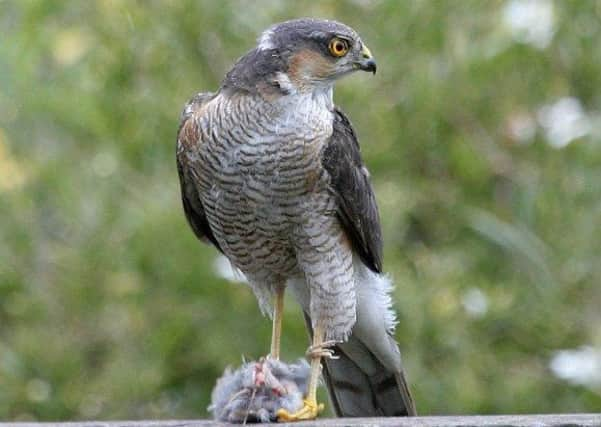Wildlife Columnist: Ups and downs of the sparrowhawk


Well, according to recorders for the British Ornithological Society, this has been a year of mixed fortunes for sparrowhawks, with the highest recorded average counts in gardens last January, followed by the lowest-ever numbers for December. The boom and bust situation was reported by the BTO’s Garden BirdWatch survey.
Sparrowhawks are most commonly observed in gardens during autumn and winter when numbers are swelled by juveniles from the breeding season just gone, and smaller birds, their typical food, flock into domestic gardens to feed. However, last year was unusual and January 2016 had the highest average counts of sparrowhawk for that time of year. Yet according to Garden BirdWatch, since the summer of 2016 numbers have been abnormally low. Indeed, during December 2016, they were only seen in 8 per cent of gardens. This was well below average and a 5 per cent reduction on December 2015.
Advertisement
Hide AdAdvertisement
Hide AdExperts think this decline was linked to wet weather in June that triggered a poor breeding season for many smaller birds, (like blue tits and great tits), on which sparrowhawks depend.
Then, with fewer young birds available the potential food to feed their own sparrowhawk chicks, it is likely survival of the young hawks reduced. It is also possible that they were affected by the wet weather too. I suspect mild weather has encouraged small birds to stay out in the wider countryside too.
For many people the return of sparrowhawks since the devastating population crash of the 1950s and 1960s is most welcome. Decline to the point of near-extinction was through pesticide poisoning, and persecution. Since then, with pesticides reduced and persecution illegal, numbers have recovered. Today, they are the bird of prey most commonly seen in gardens unless you live close to one of the red kite introduction sites.
The future for the hawk looks rosy if the fall in numbers was down to short-term fluctuation in weather .